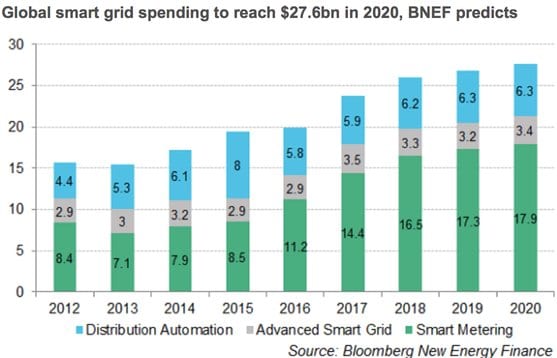Solar power is already competitive with electricity from fossil fuels and no long requires subsidy support, according to a surprise statement from Italy’s deputy minister for economic development Caludio De Vincenti last week.
When renewable energy incentives are announced later this month, they will not include provisions for new solar projects, De Vincenti said. Expectedly, Italy’s renewable energy association – AssoRinovabili – disagreed with this view, saying it would lobby to have solar incentives included in the renewable energy decree.
Solar power accounted for almost half the global clean energy investment of $310bn in 2014, with the largest amount of new build in China. The world’s most populous country plans to add as much as 15GW in 2015, Shanghai Securities News reported citing a draft plan of the National Energy Administration. It aims to install a further 8GW of transmission-grid connected plants, with the remainder to come from plants connected to the distribution network.
The share of renewables in China’s power mix has been increasing steadily. Yet, there are two downsides in this scenario: a slide in electricity demand growth and continued curtailment of generation from hydro and wind plants. The country consumed 5,523TWh of electricity in 2014 – a 3.8% increase year on year. The growth rate was only half of that in 2013 and lower than the crises years of 2008-09. A more detailed analysis of China’s slowing power market is available in this Research Note.
Solar was in the news in Europe too. The UK announced that PV installations doubled to almost 5GW as developers rushed to beat subsidy cuts for large-scale projects. The Renewables Obligation won’t be available for projects larger than 5MW that don’t connect by April. Solar capacity at the end of 2013 was 2.8GW.
Germany announced that it would invite bids from companies seeking subsidies for large-scale solar plants. Bundesnetzagentur, the regulator of the power grid, will offer support for 500MW of ground-mounted solar, with developers able to place bids until 15 April, the economy ministry said in an e-mailed statement. These PV ‘pilot tenders’ are a way to test whether auctions are a cheaper way of supporting renewables in Germany than feed-in tariffs. “That’s how we want to reach our renewable energy expansion targets in a more projectable and cost-efficient manner,” economy minister Sigmar Gabriel said.
The regulator will auction off subsidies for 400MW next year and 300MW in 2017, the ministry said. Other clean-energy technologies including wind will follow from 2017. The five ‘W’s of the German PV tenders explores the details of the ordinance outlining 1.2GW of the solar tenders, which, if successful, could set the rules for all large-scale renewables. These are for projects between 100kW and 10MW in size. Bloomberg New Energy Finance doesn’t expect the cost of large-scale ground-mounted plants to decrease significantly in Germany over the next two years.
The largest EU member state was also in the news for developments in the wind sector. Its onshore wind installations surged 58% to set a record in 2014. Almost 4.8GW of turbines were installed last year and as much as 4GW may be added this year, according to BWE wind lobby. In the offshore wind market, Germany is set to overtake the UK as the top market, with expected additions of 2GW, said the VDMA engineering lobby.
Wind installations in the US more than quadrupled to almost 4.9GW as developers took advantage of the expiring production tax credit or PTC, according to the American Wind Energy Association. The new build in Texas exceeded 1.1GW. The US now has more than 65GW of wind power capacity, second only to China’s 96GW. At year-end there was more than 12.7GW of capacity under construction, the majority in Texas.
The rapid expansion of renewable energy has an impact on utilities around the world. Bloomberg New Energy Finance has analysed a number of utilities in the US, Europe and Asia and seen them respond to the influx of renewables generation in three ways: ‘fight, flight or adapt’. Last week, our Research Note: Outsourced! Bangalore utility’s biggest customers opt out looked at the policy options for the Bangalore Electricity Supply Company in India which has seen its largest power consumers opting for alternative suppliers or choosing to generate their own clean energy. Since the exiting clients are also the largest paying consumers, this has tariff implications for all categories of consumers, including residential.








